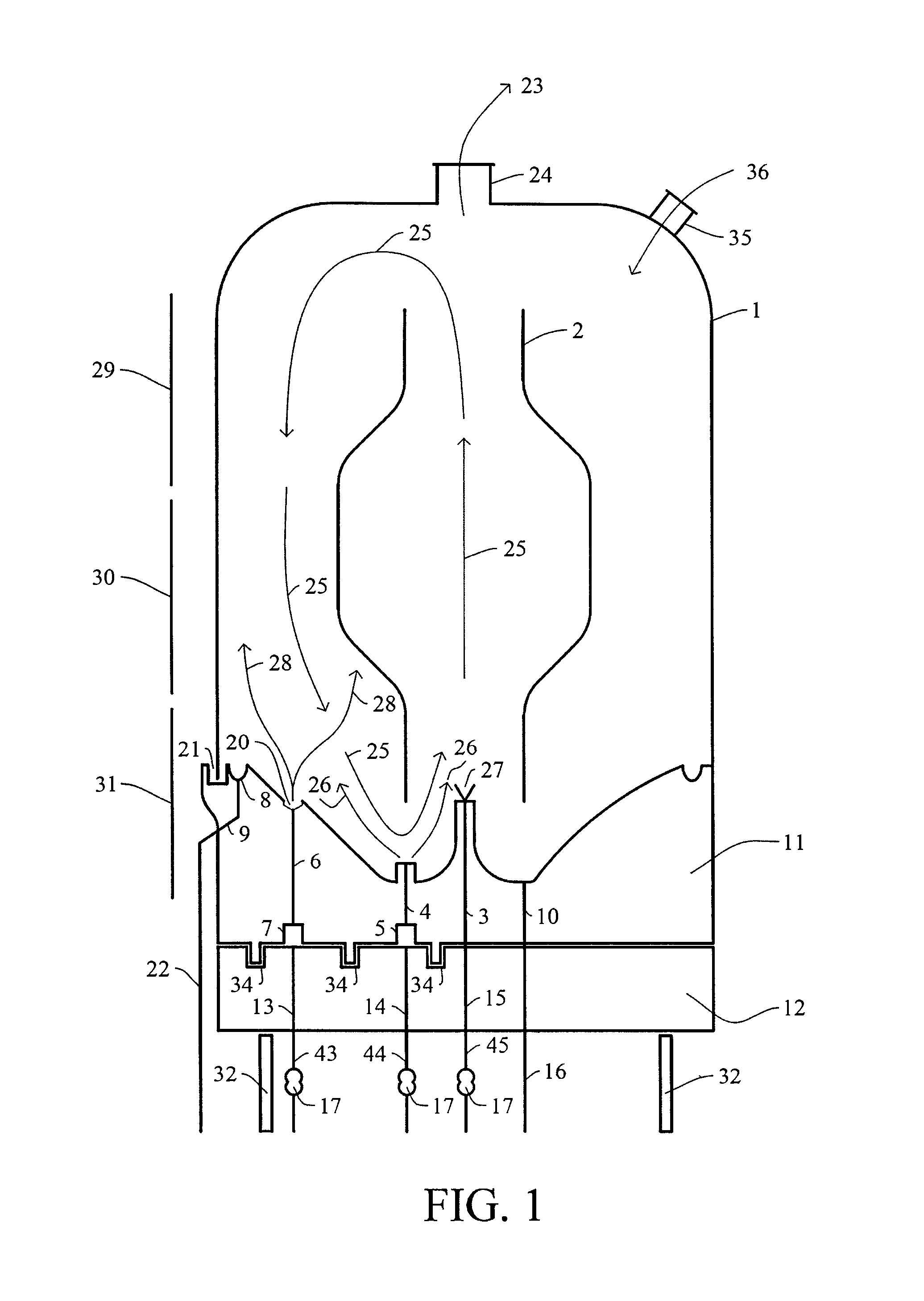Draft Tube Fluidized Bed Reactor for Deposition of Granular Silicon
a technology of fluidized bed reactor and granular silicon, which is applied in the direction of silicon compounds, lighting and heating apparatus, coatings, etc., can solve the problems of reactor damage, reduced volume otherwise available for reactants, and forced shutdown and cleanout and/or rebuilding, etc., and achieves reduced temperature limitations and contamination. , the effect of reducing the volume of voids
- Summary
- Abstract
- Description
- Claims
- Application Information
AI Technical Summary
Benefits of technology
Problems solved by technology
Method used
Image
Examples
constructive example 1
[0076]The draft tube FBR was modeled using chemical engineering simulation software widely used in industry (Chemcad, Version 6, provided by Chemstations, 3100 Wilcrest Drive, Suite 300, Houston, Tex., USA and Aspenplus, Version 8, provided by AspenTech, 20 Crosby Drive, Bedford, Mass., USA). Physical properties, thermodynamic models, and equations of state known by those skilled in the art to be sufficiently accurate for industrial applications were used. Feed gas through ports 6 was modeled at 15 mol % SiH4, balance H2 at a mass flow of 659 kg / hr at 165° C. Feed gas through port(s) 3 was modeled at 12 kg / hr H2 at 600° C. Pressure was 5 bar. Net flow upward through the draft tube was 18831 kg / hr at a volumetric rate of 1.03 ft3 / S at 706° C. 293 kg / hr exited the RXR in stream 23 as 1.2 mol % SiH4, balance H2, at 793° C. The silicon rising through the draft tube (18819 kg / hr at 706° C.) descended in the annular space and 582 kW heat was added from heaters 29, 30 raising the temperatu...
PUM
| Property | Measurement | Unit |
|---|---|---|
| inner diameter | aaaaa | aaaaa |
| gas flow rate | aaaaa | aaaaa |
| diameter | aaaaa | aaaaa |
Abstract
Description
Claims
Application Information
 Login to View More
Login to View More - R&D
- Intellectual Property
- Life Sciences
- Materials
- Tech Scout
- Unparalleled Data Quality
- Higher Quality Content
- 60% Fewer Hallucinations
Browse by: Latest US Patents, China's latest patents, Technical Efficacy Thesaurus, Application Domain, Technology Topic, Popular Technical Reports.
© 2025 PatSnap. All rights reserved.Legal|Privacy policy|Modern Slavery Act Transparency Statement|Sitemap|About US| Contact US: help@patsnap.com



